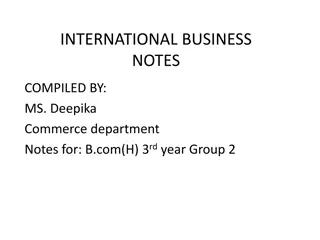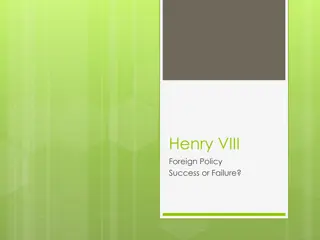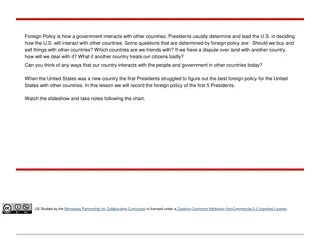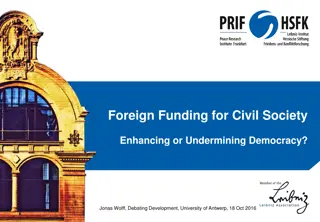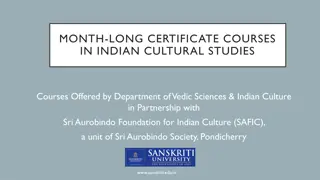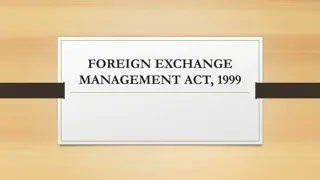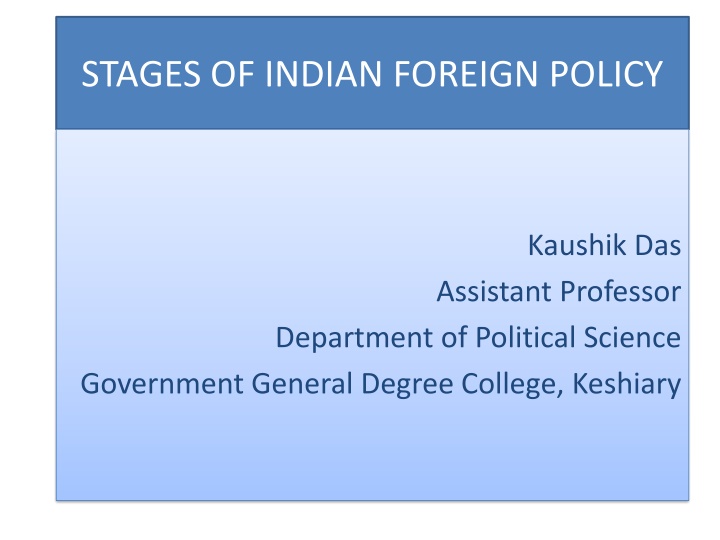
Evolution of Indian Foreign Policy: Stages and Shifts
Explore the stages of Indian foreign policy from 1947 to 1998, including phases of non-alignment, realism, regional assertion, and strategic autonomy. Discover how India navigated global dynamics, alliances, and challenges to shape its position in the international arena.
Download Presentation

Please find below an Image/Link to download the presentation.
The content on the website is provided AS IS for your information and personal use only. It may not be sold, licensed, or shared on other websites without obtaining consent from the author. If you encounter any issues during the download, it is possible that the publisher has removed the file from their server.
You are allowed to download the files provided on this website for personal or commercial use, subject to the condition that they are used lawfully. All files are the property of their respective owners.
The content on the website is provided AS IS for your information and personal use only. It may not be sold, licensed, or shared on other websites without obtaining consent from the author.
E N D
Presentation Transcript
STAGES OF INDIAN FOREIGN POLICY Kaushik Das Assistant Professor Department of Political Science Government General Degree College, Keshiary
The first phase (1947-62): Optimistic Non-Alignment This period is marked with a setting of a bipolar world, with camps led by the United States and the USSR. India s objectives in this phase were to resist dilution of its sovereignty, rebuild its economy and consolidate its integrity. India was one of the first countries to be decolonized. Thus, it was natural for India to lead Asia and Africa in a quest for a more equitable world order. In pursuit of this, India played a critical role in the establishment of the Non-Alignment Movement (NAM) (1961), which marked the peak of Third World solidarity. However, the 1962 conflict with China not only brought this period to an end but in a manner that significantly damaged India s standing on NAM.
The second phase (1962-71): Decade of Realism and Recovery After the 1962 war, India made pragmatic choices on security and political challenges. It looked beyond non-alignment in the interest of national security, concluding a now largely forgotten defence agreement with the US in 1964. However, India faced external pressures on Kashmir (Tashkent agreement 1965) from the US and UK. Through Tashkent agreement both India and Pakistan agreed to withdraw all armed forces to pre-war positions, to restore diplomatic relations; and to discuss economic, refugee, and other questions. However, the agreement did not contain a no-war pact or any renunciation of Pakistan's aggression in Kashmir (as Pakistan was an ally of the US). Therefore, India now started tilting towards USSR.
The third phase (1971-91): Greater Indian Regional Assertion India showed remarkable use of hard power when it liberated Bangladesh in the India-Pakistan war in 1971. However, it was a particularly complex phase as the US-China- Pakistan axis that came into being at this time seriously threatened India s prospects,as a regional power. India also faced sanctions from US and it allies after conducting a Peaceful nuclear explosion test in 1974 (Pokhran I). Further, the collapse of the USSR, India s close ally, and the economic crisis in 1991 compelled India to look again at the first principles of both domestic and foreign policy. The combination of events as diverse as the Gulf War (1991-1992), the break-up of USSR (1991), long standing economic stagnation and domestic turbulence came together in 1991, creating a balance of payment crisis in India.
The fourth phase (1991-98): Safeguarding Strategic Autonomy The emergence of a unipolar world (led by the USA), encouraged India to change its approach to world affairs. This quest for strategic autonomy was particularly focused on securing its nuclear weapon option (Pokhran II 1998). This is a period where India reached out to engage the US, Israel and ASEAN countries more intensively.
This fifth phase (1998-2013): India, a Balancing Power In this period, India gradually acquired the attributes of a balancing power (against the rise of China). It is reflected in the India-US nuclear deal (123 Agreement). At the same time, India could also make common cause with China on climate change and trade, and consolidate further ties with Russia while helping to fashion BRICS into a major global forum.
The sixth phase (2013-until now): Energetic Engagement In this phase of transitional geopolitics, India's policy of Non-Alignment has turned into Multi Alignment. Moreover, India is now more aware of its own capabilities and the expectations that the world has of India. That India is among the major economies of the world is one factor. The relevance of India s talent in creating and sustaining global technology, is also likely to grow in time. India's willingness to shape key global negotiations (such as conference in Paris on climate change) is equally significant. India has been able to assert itself beyond South Asia, through its approach towards the Indian Ocean Region (SAGAR initiative) and the extended neighbourhood (Act East policy and Think West policy).
CONCLUSION The following lessons that can be learnt from this historical study of Indian foreign policy: Need for greater realism in policy: India needs to change the image of a reluctant power. In the phase of optimistic non-alignment (or even later), India's focus on diplomatic visibility sometimes led to an overlooking the harsher realities of hard security. Discomfort with hard power can be reflected in the lack of adequate consultation with the military. This led to an early misreading of Pakistan s and China's intentions (Indo-Pak war 1948 & Sino-India war 1962), led to Gilgit-Baltistan & part of Kashmir and Aksai Chin region now being under the effective control of Pakistan and China respectively. India realized that soft power diplomacy is not sufficient for protecting the country. Therefore, the creation of the post of Chief of Defence Staff shows a step in the right direction.
OBSERVATIONS Need for Strong economy: An expansionary foreign policy cannot be built on the margins of the global economy. China's assertiveness today in international politics (reflected in the Belt and Road initiative) is derived from its economic power. Similar is the case for the rise of Asian tiger economies' (ASEAN countries) and Japan. There is a need for India to build a strong economic foundation to fulfil the aspiration of global power.
CONTD Need for Multi alignment: Any quest to maximize options and expand space naturally requires engaging multiple players. Today's world is characterized by complex interdependence (where countries are competing on geostrategic issues and cooperating on geo economic issues). Therefore, Indian foreign policy requires strategic hedging. However, it is difficult to reconcile between Howdy Modi & Mamallapuram (informal meeting of Indian Prime minister with US and Chinese counterparts respectively), RIC (Russia-India- China) & JAI (Japan-America-India), Quad & SCO (Shanghai Cooperation Organization), Iran & Saudis and Israel & Palestine. Therefore, Hedging is going to be a delicate exercise.
CONTD Need for Greater Risk: Low-risk foreign policy is only likely to produce limited rewards. India s emphasis on sovereignty has not prevented India from responding to human rights situations in its neighbourhood. The humanitarian assistance and disaster relief operations undertaken in Yemen, Nepal, Iraq, Sri Lanka, Maldives, Fiji and Mozambique are statements of India s capability as much it is of India s responsibility. Also, India s enthusiasm for shaping global conversations on climate change, terrorism, connectivity and maritime security is already having an impact. However, India needs to have more assertive participation in events of geopolitical significance. As Rabindranath Tagore declared, you can't cross the sea merely by standing and staring at the water.
Need for reading into things right: Foreign policy is all about dealing with global contradictions. Foreign policy of all nations reflects an assessment of opportunities and compulsions, and of risks and rewards. Even a slight misreading of the larger landscape can prove costly. For example, India going to the United Nations on Jammu & Kashmir clearly misread the intent of the Anglo-American alliance then and of the seriousness of the Cold War. India went to the United Nations, with a view that the international community will take notice of Pakistan s aggression on Kashmir However, the United Nations Security Council announced a ceasefire which created the PoK problem which we are still struggling to solve. At the same time the occupation of Kashmir by Pakistan (PoK) also geographically separated India from the energy rich Central Asian countries. In the 1960s, 1980s and again after 2001 (9/11 attack on US), India grossly underestimated the relevance of Pakistan to American and Chinese global strategy. In present times, an appreciation of world politics must include a proper understanding of Sino-US contradictions, of growing multi-polarity, of weaker multilateralism, of larger economic and political rebalancing, of greater space for regional powers, and of a world of convergence. A clearer definition of interests is therefore the next step. To conclude, in this phase of geopolitical transformation, India needs to follow an approach of working with multiple partners on different agendas. Therefore, Sabka Saath, Sabka Vikas, Sabka Vishwas is relevant in foreign policy.









